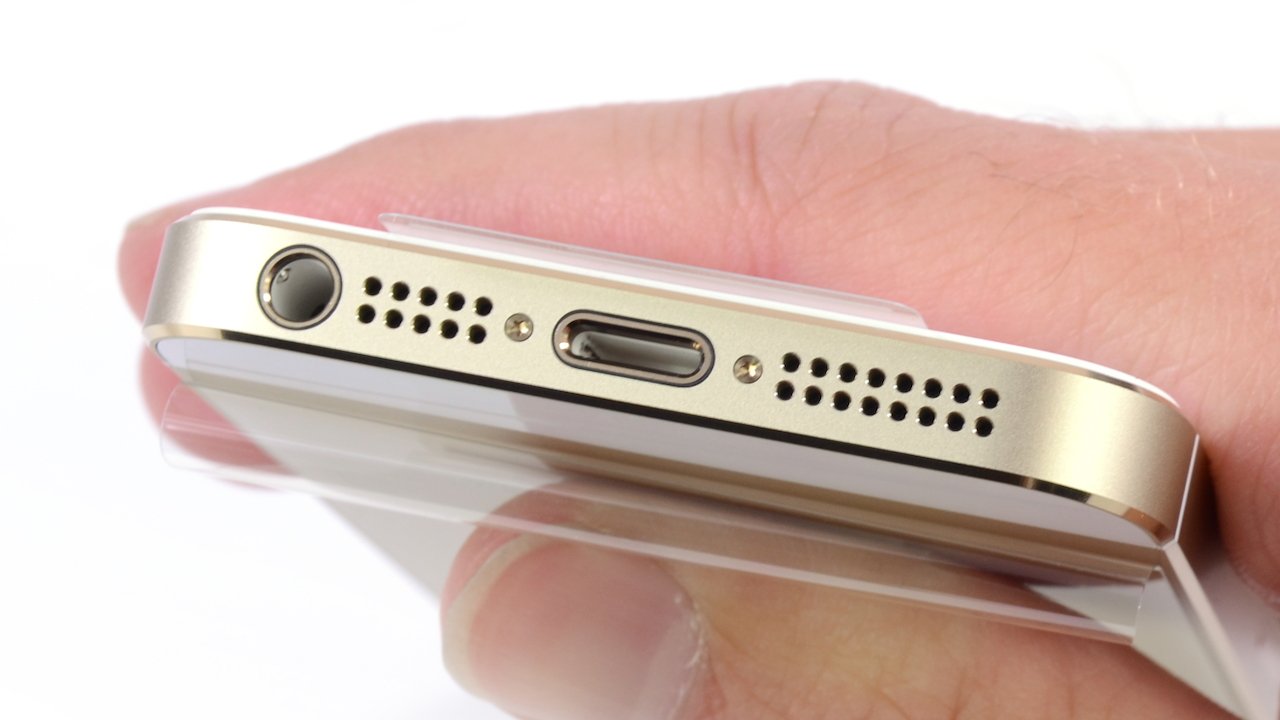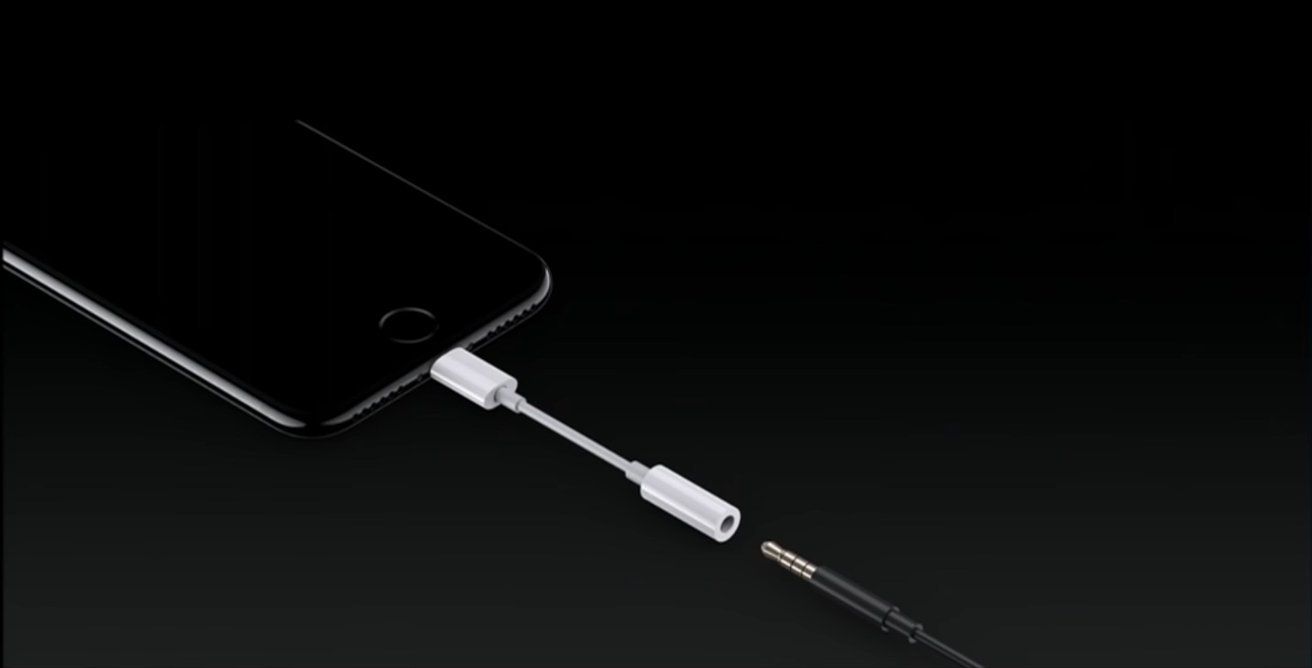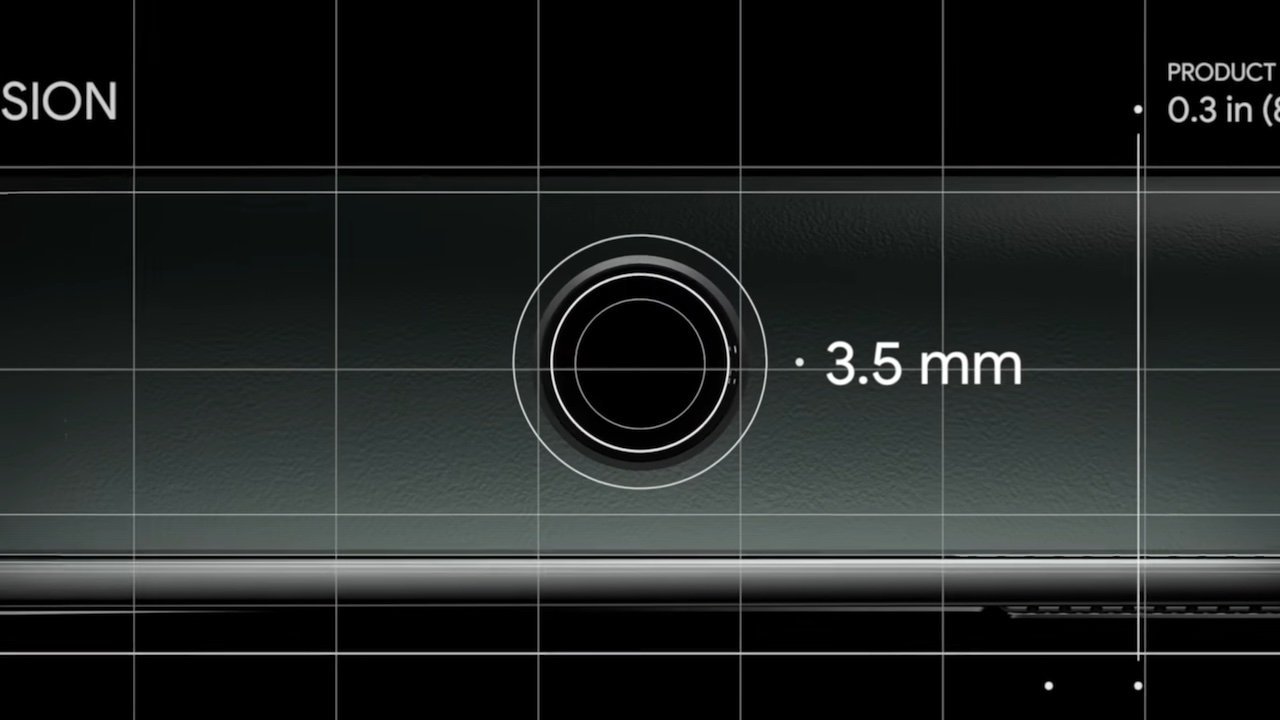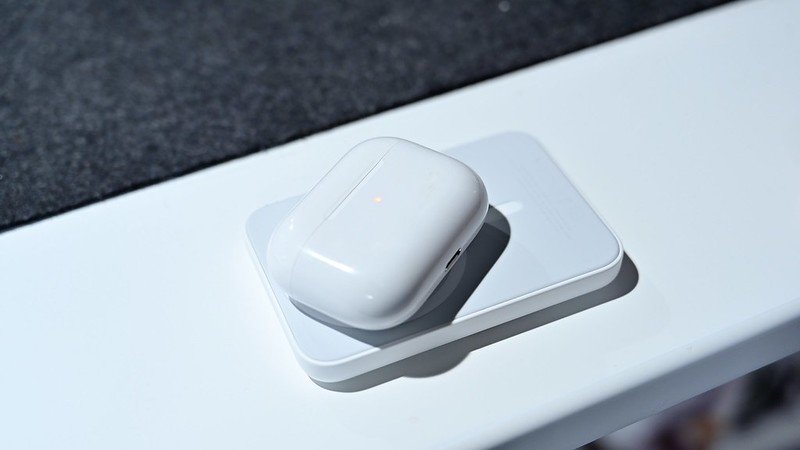Seven years later, Apple was right to kill off the 3.5mm headphone jack
Seven years later, it's more clear than ever that the days of the headphone jack on mobile devices are numbered. Here's how Apple was the vanguard for the death of the port -- and what might be next for the connector.

Headphone Jack
Since the iPhone 7, Apple has been slowly removing the headphone jack from its main consumer products. Although initially criticized, a number of other companies have since followed suit.
There are still a few products in the lineup that retain a headphone jack, but recent rumors suggest that the number of Apple-designed devices with a 3.5mm port will soon dwindle again.
Apple killed the headphone jack on the iPhone in 2016 when it launched the iPhone 7. As is the case with most tech that Apple kills off, the move was initially criticized and mocked by consumers, industry watchers, and other companies.
Since the iPhone 7, subsequent models have also lacked a 3.5mm headphone jack. Initially, Apple shipped adapters in the box so that users could still plug wired headphones or other accessories into their devices. It soon stopped doing that.

Each iPhone 7 shipped with a dongle adapter, which Apple still sells.
Apple nixed the headphone jack on its other products starting in 2018. The redesigned iPad Pro of that year was the first Apple tablet to lack a headphone jack. Now, the only iPad with a 3.5mm port is the entry-level model.
According to recent reports, that could soon change. Current rumors suggest that Apple's upcoming 10-generation iPad will finally lose the aging jack, leaving users to rely on alternative ways of listening to content on their devices (or to simply use an adapter).
Samsung is a frequent Apple-mocker, and published multiple ads criticizing the removal of the headphone jack on the iPhone. However, Samsung eventually followed suit and -- starting with the Galaxy S20 -- killed the 3.5mm jack on its own flagship devices.
More than that, Samsung tried to rewrite history by sneakily removing the ads mocking Apple's design choice.

Google mocked Apple's move with a parody before following suit the year after.
Google has similarly poked fun at the headphone jack's removal on the iPhone. A parody of Jony Ive's design videos touted that the Google Pixel 5a still had a headphone jack.
However, a year after releasing the Google Pixel 5a -- and the Apple-mocking video -- Google eventually fell in line and removed the headphone jack from its Google Pixel 6a.
It's a similar story across the Android landscape. While not all companies openly ridiculed Apple for removing the headphone jack, the majority of major smartphone brands have since followed suit.
The more cynical among tech industry watchers likely think that Apple's removal of the headphone jack was about money. After all, at the time the device was released, Apple's Beats by Dre brand accounted for nearly half of Bluetooth headphone sales.
It may be easy to forget that Apple didn't sneakily kill off the headphone jack to sell wireless headphones -- it did so openly. During its September 2016 keynote, Apple's announcement of the headphone jack's removal was immediately preceded by the debut of AirPods.

Apple's AirPods were -- and are -- a runaway success.
Looks back on the runaway success of AirPods and other true wireless competitors, it's hard to argue that Apple was wrong here.
Beyond ushering in the wireless future, however, Apple also pushed the smartphone market as a whole forward. Many of the advancements seen in today's smartphone technology likely owe at least part of their existence to the removal of an aging standard.
True wireless devices like AirPods are convenient, easy, and won't get tangled up in your pocket like standard headphones. Even if AirPods are too expensive for some, there are plenty of Bluetooth options on the market at a much more affordable price point.
On the iPad, any argument for keeping the headphone jack goes out the window when you consider how most people use the tablet. This isn't a machine used for workflows that require wired headphones. On the Mac -- which is actually used for professional audio and visual work -- there's still a headphone jack.
More than that, users with workflows that actually do require the use of no-latency wired studio monitors on an iPhone or iPad can resolve that problem with a $9 accessory.
There are obviously arguments for keeping a 3.5mm headphone jack, such as the fact that it's a simple and cheap solution for companies and consumers to implement. For audio or video workflows, a 3.5mm headphone jack with high-impedance headphones also offers low latency and clearer audio.
However, those positives don't outweigh the upside of ditching the jack for Apple -- and most consumers. Looking at the industry, it's clear that most other companies feel the same way Apple does -- they just took longer to warm up to the idea.
Read on AppleInsider

Headphone Jack
Since the iPhone 7, Apple has been slowly removing the headphone jack from its main consumer products. Although initially criticized, a number of other companies have since followed suit.
There are still a few products in the lineup that retain a headphone jack, but recent rumors suggest that the number of Apple-designed devices with a 3.5mm port will soon dwindle again.
Apple's removal of the headphone jack
The 3.5mm headphone jack can trace its roots back to 19th century switchboard operators. Over a century after its humble, low-tech beginnings, Apple killed it on its primary money-maker: the iPhone.Apple killed the headphone jack on the iPhone in 2016 when it launched the iPhone 7. As is the case with most tech that Apple kills off, the move was initially criticized and mocked by consumers, industry watchers, and other companies.
Since the iPhone 7, subsequent models have also lacked a 3.5mm headphone jack. Initially, Apple shipped adapters in the box so that users could still plug wired headphones or other accessories into their devices. It soon stopped doing that.

Each iPhone 7 shipped with a dongle adapter, which Apple still sells.
Apple nixed the headphone jack on its other products starting in 2018. The redesigned iPad Pro of that year was the first Apple tablet to lack a headphone jack. Now, the only iPad with a 3.5mm port is the entry-level model.
According to recent reports, that could soon change. Current rumors suggest that Apple's upcoming 10-generation iPad will finally lose the aging jack, leaving users to rely on alternative ways of listening to content on their devices (or to simply use an adapter).
Third-party manufacturers
Apple's competitors wasted no time mocking the company for removing the headphone jack, even running ads poking fun at the decision. Eventually, however, most other major Apple rivals ended up copying the company's move.Samsung is a frequent Apple-mocker, and published multiple ads criticizing the removal of the headphone jack on the iPhone. However, Samsung eventually followed suit and -- starting with the Galaxy S20 -- killed the 3.5mm jack on its own flagship devices.
More than that, Samsung tried to rewrite history by sneakily removing the ads mocking Apple's design choice.

Google mocked Apple's move with a parody before following suit the year after.
Google has similarly poked fun at the headphone jack's removal on the iPhone. A parody of Jony Ive's design videos touted that the Google Pixel 5a still had a headphone jack.
However, a year after releasing the Google Pixel 5a -- and the Apple-mocking video -- Google eventually fell in line and removed the headphone jack from its Google Pixel 6a.
It's a similar story across the Android landscape. While not all companies openly ridiculed Apple for removing the headphone jack, the majority of major smartphone brands have since followed suit.
An argument for why
At the time, Apple justified the removal of the headphone jack by saying that Lightning was an overall better standard for audio. It added that removing the single-use port also freed up internal space for larger or additional components.The more cynical among tech industry watchers likely think that Apple's removal of the headphone jack was about money. After all, at the time the device was released, Apple's Beats by Dre brand accounted for nearly half of Bluetooth headphone sales.
It may be easy to forget that Apple didn't sneakily kill off the headphone jack to sell wireless headphones -- it did so openly. During its September 2016 keynote, Apple's announcement of the headphone jack's removal was immediately preceded by the debut of AirPods.

Apple's AirPods were -- and are -- a runaway success.
Looks back on the runaway success of AirPods and other true wireless competitors, it's hard to argue that Apple was wrong here.
Beyond ushering in the wireless future, however, Apple also pushed the smartphone market as a whole forward. Many of the advancements seen in today's smartphone technology likely owe at least part of their existence to the removal of an aging standard.
Apple's alternatives
In the vast majority of cases, there are going to be better options for listening to audio than a pair of wired headphones.True wireless devices like AirPods are convenient, easy, and won't get tangled up in your pocket like standard headphones. Even if AirPods are too expensive for some, there are plenty of Bluetooth options on the market at a much more affordable price point.
On the iPad, any argument for keeping the headphone jack goes out the window when you consider how most people use the tablet. This isn't a machine used for workflows that require wired headphones. On the Mac -- which is actually used for professional audio and visual work -- there's still a headphone jack.
More than that, users with workflows that actually do require the use of no-latency wired studio monitors on an iPhone or iPad can resolve that problem with a $9 accessory.
There are obviously arguments for keeping a 3.5mm headphone jack, such as the fact that it's a simple and cheap solution for companies and consumers to implement. For audio or video workflows, a 3.5mm headphone jack with high-impedance headphones also offers low latency and clearer audio.
However, those positives don't outweigh the upside of ditching the jack for Apple -- and most consumers. Looking at the industry, it's clear that most other companies feel the same way Apple does -- they just took longer to warm up to the idea.
Read on AppleInsider

Comments
It isn't about 'courage' though. That has nothing to do with anything.
Right now (2022) I'd still Rather have one than not have one.
Typing this on a Brydge BT Keyboard / Trackpad that has worked flawlessly from day one.
Please know I really appreciate 99% of what AI does. Your how-to guides are among the best on the 'net.
BT3 was horrible (BT4 bearable), but walking with a headphone cable flopping around getting in your arms ways and such PLEASE...
An argument for why?
You seem to have forgotten to include it.
I use Etymōtic (ER4SR and HF3 headset) and (Grado RS-1X and SR325) headphones.
I found dongles that let me listen AND charge simultaneously, so no problem with no headphone jack.
Yes, I have AirPod Pros which I HATE. Mediocre sound and they never feel comfortable and constantly fall out.
The real question…
Why does the iPhone still have a Lightning port instead of a USB-C port?
I will agree with you about AirPods. I’ve tried them and find them very uncomfortable. My ear canal must be a different shape because they just don’t work for me either.
Apple knew there would be some pushback when they removed the headphone jack, but they also knew the vast majority of their loyal customer base would quietly go along with their decision and whip out their credit cards to buy the latest iPhone anyway, plus throw in a few more bucks for a couple of dongles so they could still use their wired headphones, some of which cost more than an iPhone.
Apple banked on our loyalty and willingness to go along with a change that they wanted to push on us. They prevailed and we went along with it despite there being no obvious benefits for us. It's not like removing the headphone jack was ever a prerequisite for the other audio connectivity options that were already available on the iPhone, like Bluetooth, AirPlay, and Lightning dongles. The AirPods would be no less groundbreaking or any less delightful to use from an iPhone that also sports a 3.5 mm audio jack.
I'm not applauding Apple's decision to remove the headphone jack on the iPhone and will be even less enamored if they do the same with the iPad. They got away with it and we caved. They knew we'd still keep buying iPhones, and we have. I still have. This pattern of taking advantage of our loyalty isn't something Apple should be celebrating or something that we should view as a feather of inspiration in Apple's cap. They can only play the loyalty card so many times.
The fact that other vendors blindly followed Apple's lead should surprise nobody in the least. It does not validate Apple's decision, it merely shows that they are going to copy anything Apple does without putting any thought behind what or why they do things. Just like the removal of a charger from device packages, Apple's moves only embolden the hangers-on and followers. They know if Apple can get away with it, maybe they can get away with it too.
Apple is large and powerful enough to dictate and/or change the rules of the game, and there is very little anyone can do about it. I still intensely dislike not having an audio jack.
I have never owned a pair if lightning-connected headphones. I have however owned quite a number of lightning to headphone jack dongles of various qualities and price points.